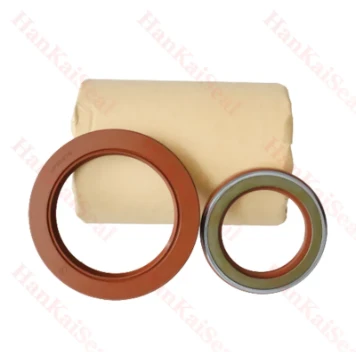Nov . 11, 2024 01:08 Back to list
Hydraulic Ram Seal Change Guide for Optimal Performance and Longevity
Hydraulic Ram Seal Replacement A Comprehensive Guide
Hydraulic rams play a crucial role in various industrial and agricultural applications, providing efficient lifting and pushing capabilities through the power of hydraulics. However, like any mechanical system, hydraulic rams can experience wear and tear over time, particularly with their seals. This can lead to leaks, reduced efficiency, and ultimately, failures in operation. Understanding how to properly replace hydraulic ram seals is essential for maintaining equipment performance and extending the lifespan of your hydraulic systems.
Understanding Hydraulic Rams
Before delving into seal replacement, it is important to understand the basic structure of a hydraulic ram. Typically, a hydraulic ram consists of a cylinder, a piston, and various seals and fittings that ensure fluid stays contained within the system. The seals are vital as they prevent hydraulic fluid from leaking out, which is essential for maintaining pressure and efficiency. Over time, exposure to extreme temperatures, pressure fluctuations, and contaminants can wear down these seals.
Signs of Seal Failure
Recognizing the signs of seal failure early can prevent more serious issues down the line. Common indicators include
1. Fluid Leaks Visible puddles or drips of hydraulic fluid around the ram are clear signs that seals may need replacement. 2. Decreased Performance If the ram shows reduced lifting power or slow operation, worn seals may be allowing hydraulic fluid to escape. 3. Unusual Noises Grinding or whining sounds can indicate air entering the system due to seal failure.
If you notice any of these signs, it’s time to consider replacing the seals
.The Replacement Process
hydraulic ram seal replacement

1. Safety First Before starting any maintenance, ensure that the ram is disconnected from its power source and that all hydraulic fluid is drained to avoid spills and accidents.
2. Disassemble the Ram Removing the ram from its mounting brackets is necessary for accessing the seals. Carefully disassemble the components of the ram, noting the order and orientation of parts for reassembly.
3. Remove Old Seals Once you have access to the seals, use a seal pick or similar tool to carefully remove the worn seals from their grooves. Be cautious not to damage the cylinder or piston surfaces.
4. Clean the Surfaces Before installing new seals, clean the sealing surfaces using a non-abrasive cleanser to remove any dirt, debris, or old seal material. This prepares the area for a proper seal fit.
5. Install New Seals Carefully fit the new seals into their respective grooves, ensuring they are seated evenly and do not twist during installation. It’s advisable to lubricate the seals with a small amount of hydraulic fluid to facilitate installation and reduce the risk of damage.
6. Reassemble the Ram Reassemble the ram in the reverse order of disassembly, ensuring all components are properly aligned and fastened.
7. Test the System Reconnect the ram to its hydraulic source and gradually fill the system with fluid. Monitor for any leaks or performance issues before putting it back into regular operation.
Conclusion
Regular maintenance of hydraulic rams, including timely seal replacements, is vital for optimal performance and longevity. By following the correct procedures and addressing seal issues early on, you can minimize downtime and ensure your hydraulic systems operate reliably. Whether you're a seasoned technician or a DIY enthusiast, understanding the seal replacement process is a valuable skill that can save time and costs in the long run. Always remember, safety comes first—so take proper precautions during maintenance to protect yourself and your equipment.
-
TCN Oil Seal Metal Ring Reinforcement for Heavy Machinery
NewsJul.25,2025
-
Rotary Lip Seal Spring-Loaded Design for High-Speed Applications
NewsJul.25,2025
-
Hydraulic Cylinder Seals Polyurethane Material for High-Impact Jobs
NewsJul.25,2025
-
High Pressure Oil Seal Polyurethane Coating Wear Resistance
NewsJul.25,2025
-
Dust Proof Seal Double Lip Design for Construction Equipment
NewsJul.25,2025
-
Hub Seal Polyurethane Wear Resistance in Agricultural Vehicles
NewsJul.25,2025
-
The Trans-formative Journey of Wheel Hub Oil Seals
NewsJun.06,2025
Products categories
















